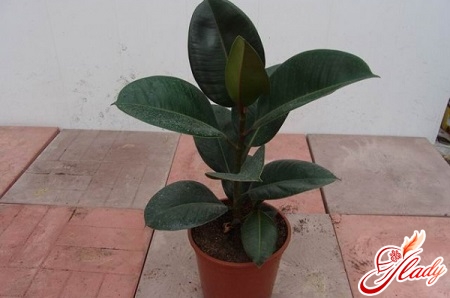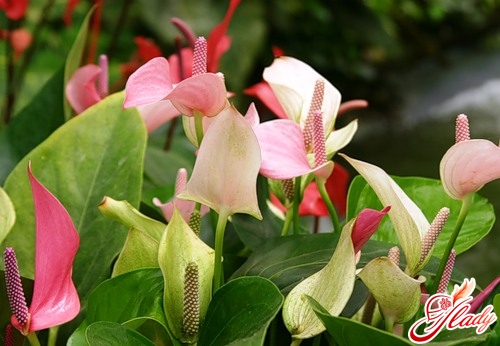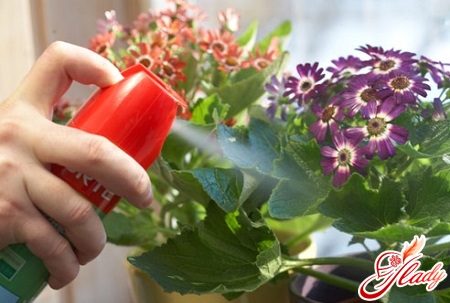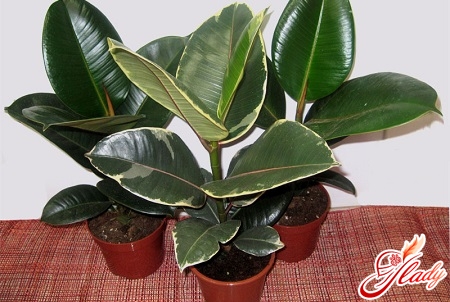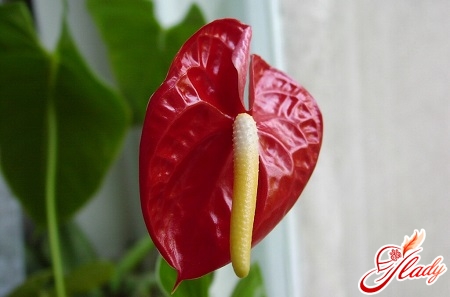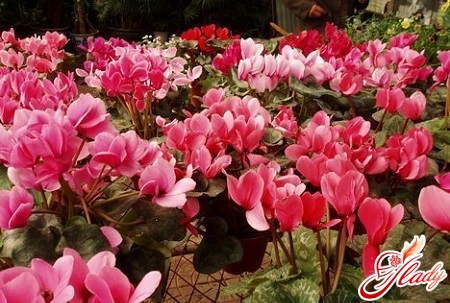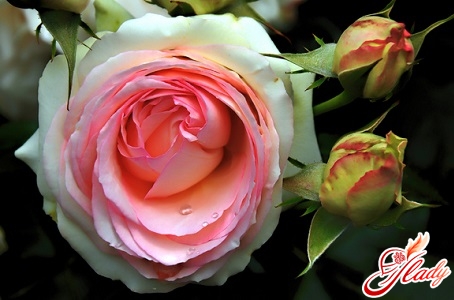 Probably, one rarely meets a woman whodo not like such beautiful flowers as roses. They have long been recognized as a symbol of romantic feelings for a long time. With them, young people go to confess their love or to ask for hands with their beloved. But today it's not just decorative flowers. For a long time, sweets, jams and teas prepared from petals of roses have become popular, aromatic salt from roses has been established, and it is also used in folk medicine. The garden plots of many flower lovers are adorned with beautiful roses, which are the pride of every caring hostess. These are quite capricious flowers, and if you are going to breed them, you should be prepared that you need proper care of roses, knowledge and skill, as well as patience and love. But you will be rewarded for all the trouble when you see your garden drowning in fragrant beauty. It should be borne in mind that garden roses can grow in one place up to ten years. Therefore, for successful cultivation and care of a rose bush, you need to choose the most convenient place, taking into account the fact that it will be occupied by a rose for several years. Ideal for growing roses is a sunny, well protected from the wind and fertile soil landing site.
Probably, one rarely meets a woman whodo not like such beautiful flowers as roses. They have long been recognized as a symbol of romantic feelings for a long time. With them, young people go to confess their love or to ask for hands with their beloved. But today it's not just decorative flowers. For a long time, sweets, jams and teas prepared from petals of roses have become popular, aromatic salt from roses has been established, and it is also used in folk medicine. The garden plots of many flower lovers are adorned with beautiful roses, which are the pride of every caring hostess. These are quite capricious flowers, and if you are going to breed them, you should be prepared that you need proper care of roses, knowledge and skill, as well as patience and love. But you will be rewarded for all the trouble when you see your garden drowning in fragrant beauty. It should be borne in mind that garden roses can grow in one place up to ten years. Therefore, for successful cultivation and care of a rose bush, you need to choose the most convenient place, taking into account the fact that it will be occupied by a rose for several years. Ideal for growing roses is a sunny, well protected from the wind and fertile soil landing site. 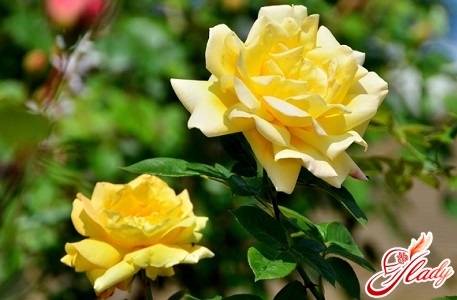
The rules of caring for roses
Let's now find out how to properly care forfor roses and what is needed for this: The rules of pruning In spring, there comes a time of active growth for roses. The process of bud budding begins, the stems of the flower grow stronger and thicker, a healthy growth appears with fresh light green or reddish leaves. But sometimes shoots come out that are called "sleeping", they look undeveloped and thin. This may be due to spring frosts or a lack of calcium. It is necessary to get rid of such shoots. All the "sleeping" shoots are cut off on one or two leaves and after that give a rose bush a liquid top dressing in the form of manure or mineral fertilizers. After a certain period of time new shoots appear on the shoots. Do not disturb the rose, if the "sleeping" shoots appear in late August. Still young growth will not have time to ripen to winter, and starting work with them, you just loosen the rose before the cold. Loosening of the soil The bushes of roses require constant loosening of the soil. In general, regular loosening of the soil and simultaneous removal of weeds around rose bushes is a prerequisite for the care of this plant. In the garden, these works usually begin in May. In order not to provoke a flower for further growth, these works cease in July-August. The purpose of loosening is to facilitate the access of air and heat to the root system of the rose bush, and together with loosening, the weeds around the flower are also destroyed. This procedure is useful for a rose in hot weather immediately after watering. Usually, after abundant and prolonged rains, the upper layer of the earth is covered with a continuous crust, which makes it difficult for air to penetrate down to the roots of the rose bush. Therefore, plants need additional loosening of hardened soil, but the depth of loosening should not exceed five to ten centimeters in depth, as with deeper loosening it is possible to damage the tender root of the bush and thereby cause irreparable harm to the rose. Mulching and fertilizing the soil with fertilizers Caring for roses should be done constantly and after the end of spring works in the garden, but before opening the buds on the rose bushes, one should mulch the surface of the earth around the plant. For this, peat, humus or peat compost is used. Podsypku can be carried out a layer of up to ten centimeters, which allows you to reduce the number of watering and loosening around the bush. As a result of mulching, the soil improves its chemical and physical properties, which has a beneficial effect on the development, growth and types of roses. Roses require good nutrition and a variety of nutrients in the soil. Bushes of roses in the first year of planting cost three top-dressings for the summer. The main top dressing is done in the second year of cultivation. Due to biological characteristics, roses require certain fertilizers at different times of the year. It is very effective joint application of mineral and organic fertilizers in the feeding of roses. Organic nutrition, improves the properties and structure of the soil for growth and vital activity of the plant. It should be noted that organic fertilizers work more slowly than mineral fertilizers. With them, you can achieve striking results in growing roses, using organic and mineral fertilizers in the right proportions. Dry fertilizing should be done after rain or copious irrigation. Fertilizers should not be scattered in the center of the bush, it will be more correct to retreat by fifteen centimeters, and after fertilizer addition, it is necessary to once again pour the soil. On clay soils, it is recommended to feed roses less often, and flowers growing on sandy soils more often need top dressing. During flowering, experienced gardeners do not feed garden roses at all. Proper watering Roses, like most representatives of the flora, painfully suffer a water deficit. The lack of water affects the growth of shoots, the leaves start to fade and crumble, the bush loses its decorative beauty. Moisture to roses is most required during a period of intensive development, and specifically - in the phase when the first shoots appear, the buds bloom and the first leaves appear. This includes the period of the end of the first flowering and the appearance of new shoots. Sprinkle gentle garden roses recommended melt or rain water. If you use a watering can, then the sprinkler should not be used. It is better to water a straight trickle, directed to the base of the flower in a special groove prepared for this. In several approaches, gradually watering, should be used up to fifteen liters of water. When watering, you must be careful and try not to spray water leaves of the bush. Such abundant watering is carried out once a week, and on hot days - every three to four days. Daily surface watering does not saturate rose bushes with moisture until the end. Periodically, the plant needs abundant watering. Only in any case you can not use cold water for irrigation. Roses from this begin to ache: the roots lose the ability to absorb water and there comes a period of water starvation in the flower. Features of watering at the end of the season:
- The end of August and the beginning of September is time,when excessive watering brings roses harm. Excessive amount of water pushes the flower to further growth, new shoots do not have time to ripen in time, and soon they easily fall prey to the first frosts. Therefore, at the end of the season - in the last days of summer - there will be enough precipitation in the roses.
- But sometimes September is hot and dry, in thisIf the roses are desired, moderate watering once a week, up to twelve liters of water per bush. That in winter, when the hardened soil stops passing water, the roots of the rose had its own moisture reserves.
Preparation for winter and shelter Care of gardenroses and plant preparation for the winter period has its own specific features. Garden roses belong to heat-loving plants, and colds, reaching minus ten degrees Celsius, are fatal for them. Therefore, rose bushes for winter should be sheltered. Before hiding, it is supposed to cut off weak and thin shoots, because they will only deplete the healthy parts of the bush. And cut strong and thick shoots, leaving up to sixty centimeters in height from the surface of the earth. Usually for winter shelter bushes of roses use peat, turfy soil, humus or compost. In the listed substrates it is desirable to add wood sawdust. Protective material should be prepared in advance, gently laying them in piles near each bush. If before the beginning of November the first colds appear, then it is necessary to sketch and tamper around the trunk of the rose bush protective material with a layer whose height should reach forty centimeters. And on top to cover with lapnik or polyethylene film. All materials intended for warming roses for the winter, should be dry. If they are wet, then they simply freeze and turn into an impenetrable cover, through which there will be no access of oxygen to the roots of the rose; and the plant itself will freeze. This method of shelter can not be used in marshy soils and soils with groundwater, because in this case a greenhouse effect is formed, in which roses begin to rot and rot. In the spring, garden roses react painfully to warming and the overheating that arises because of it. In March, it is necessary to remove the remaining snow from the protective material and dig the drainage channels. It is necessary that the melt water is not collected at the places where roses are planted. And approximately in the middle of April, when the weather becomes more stable, the plants should be freed from the warming material. And to protect the roses from sunburn and drying, they must be slightly covered with dry leaves - until the appearance of the first shoots, after which the shelter from the leaves is removed. Protection against pests and prevention of possible diseases In order to protect roses from disease and damage by insects, you need to take the necessary sanitary and preventive measures. Periodically pouring flowers in the garden, you can simultaneously examine them; so you can notice changes on the bush, leaves, petals or bud in time. The affected part should be cut and sprinkled with a suitable protective preparation. In the garden roses are more often exposed to such diseases as gray rot, rust, powdery mildew, infectious burn and the appearance of spots on the leaves. Dangerous for roses pests are a leafhopper, aphids, a leaf roller, a gall mite, a spider mites and a rosewood sawfly. With an optimal location in the garden, roses become the most resistant to pests and various diseases. But even the most enduring varieties of roses, growing on fertile soil, are not immune from the appearance of pests or diseases. Unfavorable weather, for example, a long drought or a rainy summer, can contribute to the development of diseases in rose bushes. It is important to constantly inspect roses, although it is very difficult to notice for the first time the appearance of pests or the appearance of a disease. But in no case should you miss the obvious symptoms of defeat by insects or any disease. Take the necessary measures as soon as possible, only so you can save your roses. There is an opinion that only specialists in the field of floriculture can provide certain conditions and proper care for roses. This opinion was formed in the desire to bring out "ideal" roses grown especially for exhibitions and competitions. Of course, in this case, some knowledge and experience of the florist are required. But with the right approach, following the basic requirements and rules for caring for rose bushes, they grow in the garden without any problems even for gardeners. Therefore, dear women, safely plant a queen of flowers in your garden and enjoy the pleasant smell and beautiful coloring of this magical flower.




